To get an idea of how difficult it was in the seventeenth century for a woman to rise to the highest echelons of art, one need only scroll through the Catalogue of the Academicians of San Luca compiled by Giuseppe Ghezzi in the late seventeenth century. The men are spread over ten pages, with the lists divided alphabetically. The Catalogue of Women Painters and Academicians Yes di Honore as well as di Merito is, on the other hand, a list that does not even reach the bottom margin of the sheet. There are names now well known, such as those of Elisabetta Sirani, Lavinia Fontana, Giovanna Garzoni. There are painters who are less famous but whose activity is known, such as Virginia Vezzi, Caterina Ginnasi, Isabella Parasole. There are others whose names or little more remain with us, such as Anna Maria Vaiani and Laura Marescotti. There is no lack of the figure of Plautilla Bricci, an academician of San Luca (she is attested as a “painter” in 1655, although the date of her admission is not known, although it is presumed to be close), an artist whose path has traits that make it very different from those of her rare colleagues and therefore unique, and around whom much critical attention, as well as literature, has been focused in recent years. Thus, after the first monograph on the artist, written by Consuelo Lollobrigida in 2017, a pioneering work based on a substantial perusal of archival materials, after Melania Mazzucco’s 2019 novel L’architettrice, which won the Silvia Dell’Orso Prize as the best popular product of the year, in 2021 came the first exhibition entirely dedicated to her, Plautilla Bricci pittrice e architettrice. A Silent Revolution, curated by Yuri Primarosa and on display until April 19, 2022 in the renovated halls of the Corsini Gallery, partly among the spaces of the permanent collection and partly in the rooms set aside for temporary exhibitions, strengthened also by a new lighting system that borders on perfection.
There are three very good reasons to consider Plautilla Bricci’s journey singular. The first: in addition to being a painter, she was also an “architect.” And it is worth dwelling on this term, which some people, after glimpsing the exhibition posters attached to the buses (heaven forbid we dare enter a museum), have obtusely considered the result of modern political correctness. On the contrary, “architect” is a seventeenth-century term, attested in Plautilla’s time as an adjective, moreover quite common: “the architect nature,” “an architect mind of much work,” “the architect hand of a god.” It is the feminine of “architect,” a term that was also used at the time as a noun to refer to the profession we now call “architect.” Vasari, for example, wrote Le vite de’ più eccellenti pittori, scultori e architettori. Beginning with Plautilla, the first woman to have a career in the craft of architecture, it will also be used as a feminine noun (she herself introduced the usage, signing herself “Plautilla Briccia architettrice” in the specifications for Villa Benedetta, 1663). Moreover, finding full acceptance in the dictionaries of the Italian language.
The second reason is the family context of origin. Elisabetta Sirani and Lavinia Fontana, to cite two examplesî, were daughters of full-time painters. For a seventeenth-century woman, there were two main ways to make a career as an artist: having a father who practiced the trade, preferably with a business already well established, or learning to paint in a convent after taking vows. Plautilla’s father, on the other hand, was a “multifaceted” character, one might say with understatement. More prosaically, he did a thousand things. He wrote pamphlets, pamphlets, plays from which he earned nothing however much circulation they had, he gave himself to music from time to time, he was also a mathematician when necessary, and of course he painted. He called himself a “painter,” although his activity was mostly limited to modest operations (such as the execution of insignia or coats of arms, or illustrations for pamphlets): we know of drawings that suggest his involvement in more demanding works, which, however, are not known to us. It was from him, however, that Plautilla could receive an early education (Lollobrigida, in her 2017 monograph, also speculated about her frequentation of Cavalier d’Arpino’s workshop, though without documents to attest it, but on the basis of the fact that her father knew the great painter and that the family had a house near Cavaliere’s palace).
Finally, the third reason for Plautilla Bricci’s singularity is her own career, which took place largely under the sign of her partnership (one would say so today) with Abbot Elpidio Benedetti, Giulio Mazzarino’s agent in Rome who was the subject of a dense monograph by curator Primarosa, and who granted her an independence that was extremely rare for a woman of the time, since she did not marry, nor did she ever become a nun. The Corsini Gallery exhibition enters on all these aspects, presenting virtually all of Plautilla Bricci’s known production, some recent discoveries (including the artist’s first known work), an itinerary that touches on the political events of the time (and in particular the issue of pro-French circles in Rome, which Plautilla Bricci approached through Elpidio Benedetti, and on which there is an in-depth study in the catalog, signed by Aloisio Antinori), and which is offered to the visitor with a strongly monographic slant, thus without lingering too much, for example, on issues such as the roles of women artists in seventeenth-century Rome. It is therefore not an exhibition that chases certain trends, not least because the critical attention on Plautilla Bricci has been kindled, as will be seen below, for several years, although it is only recently that her name has also become known to a wider public than scholars.


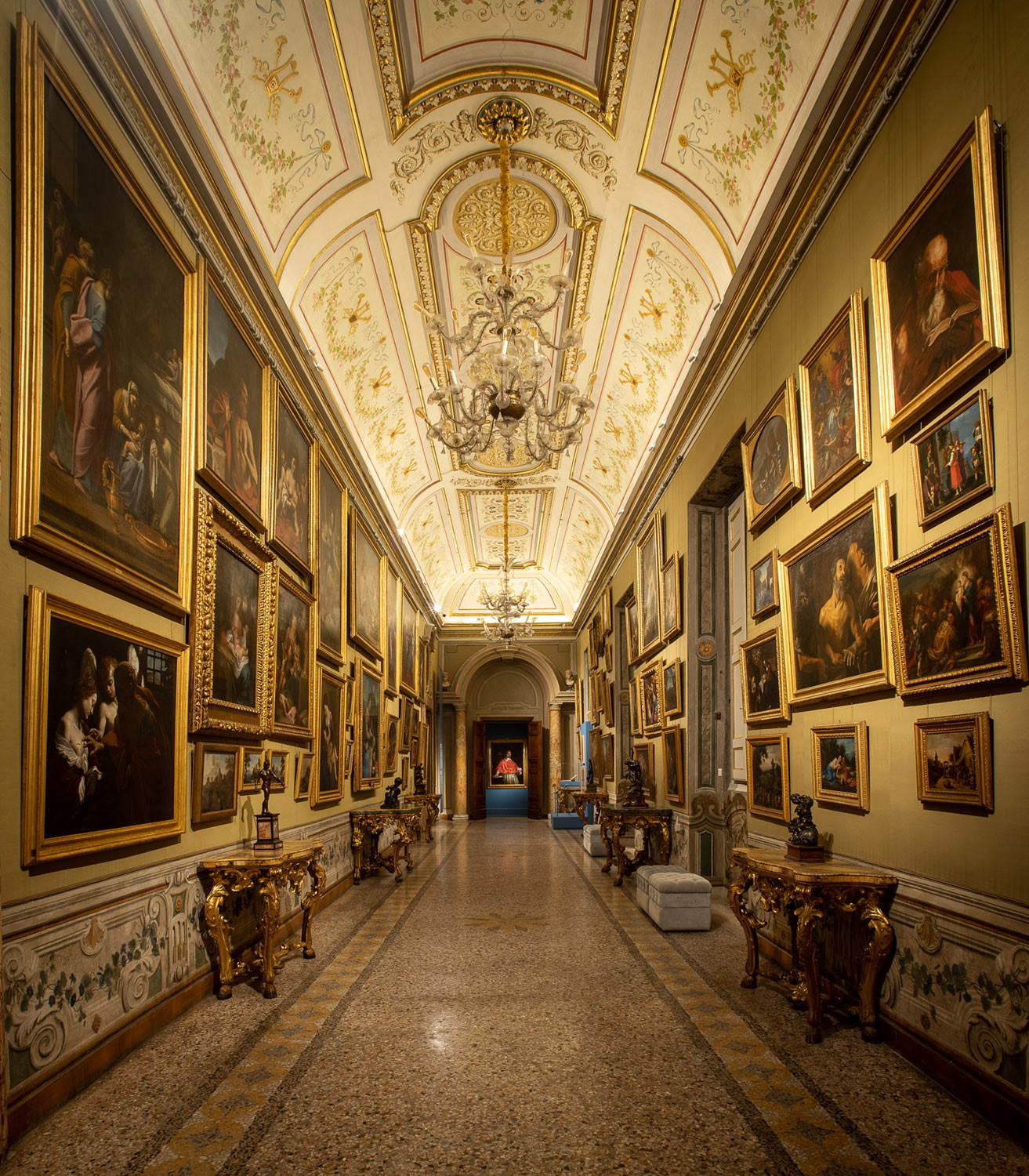
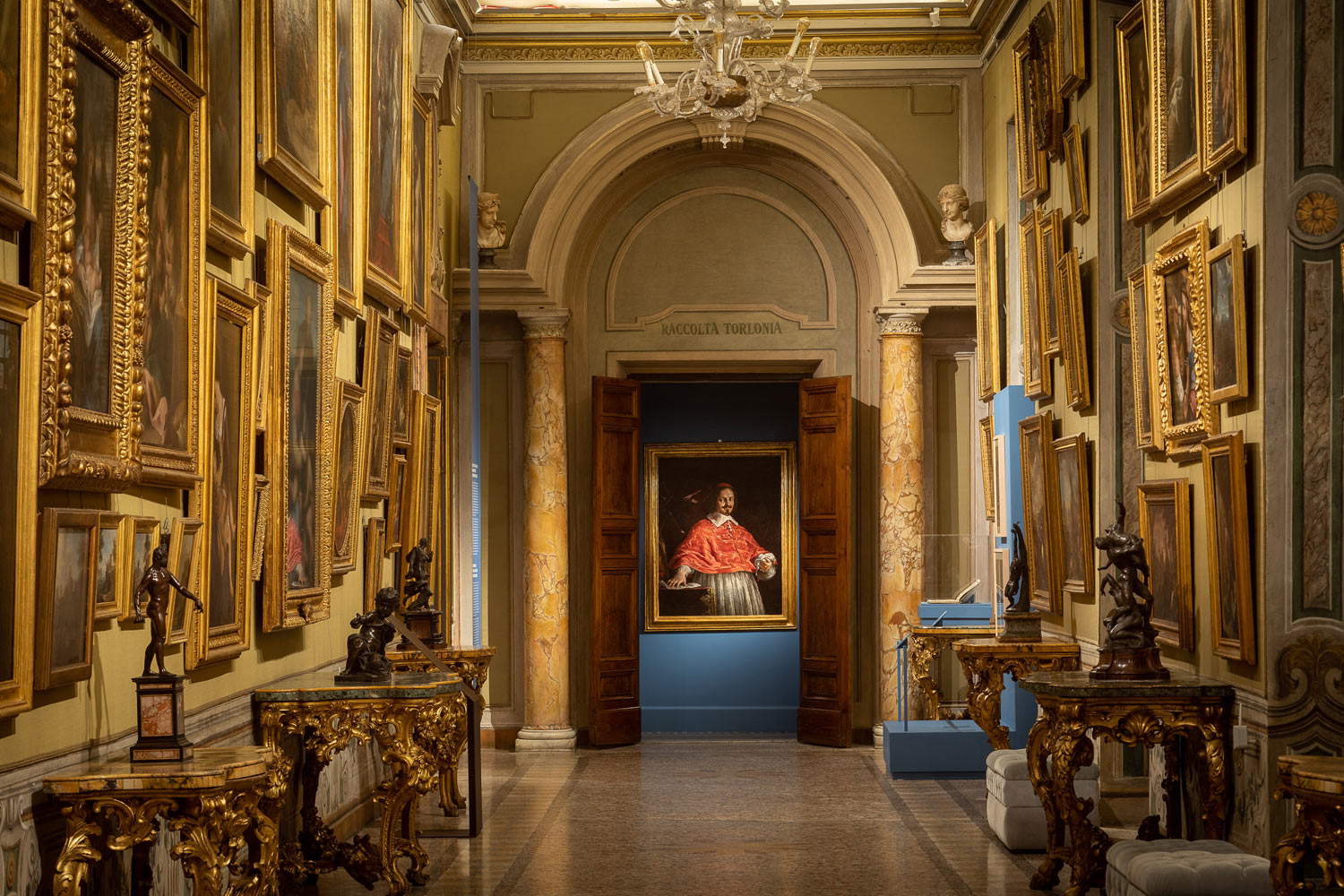
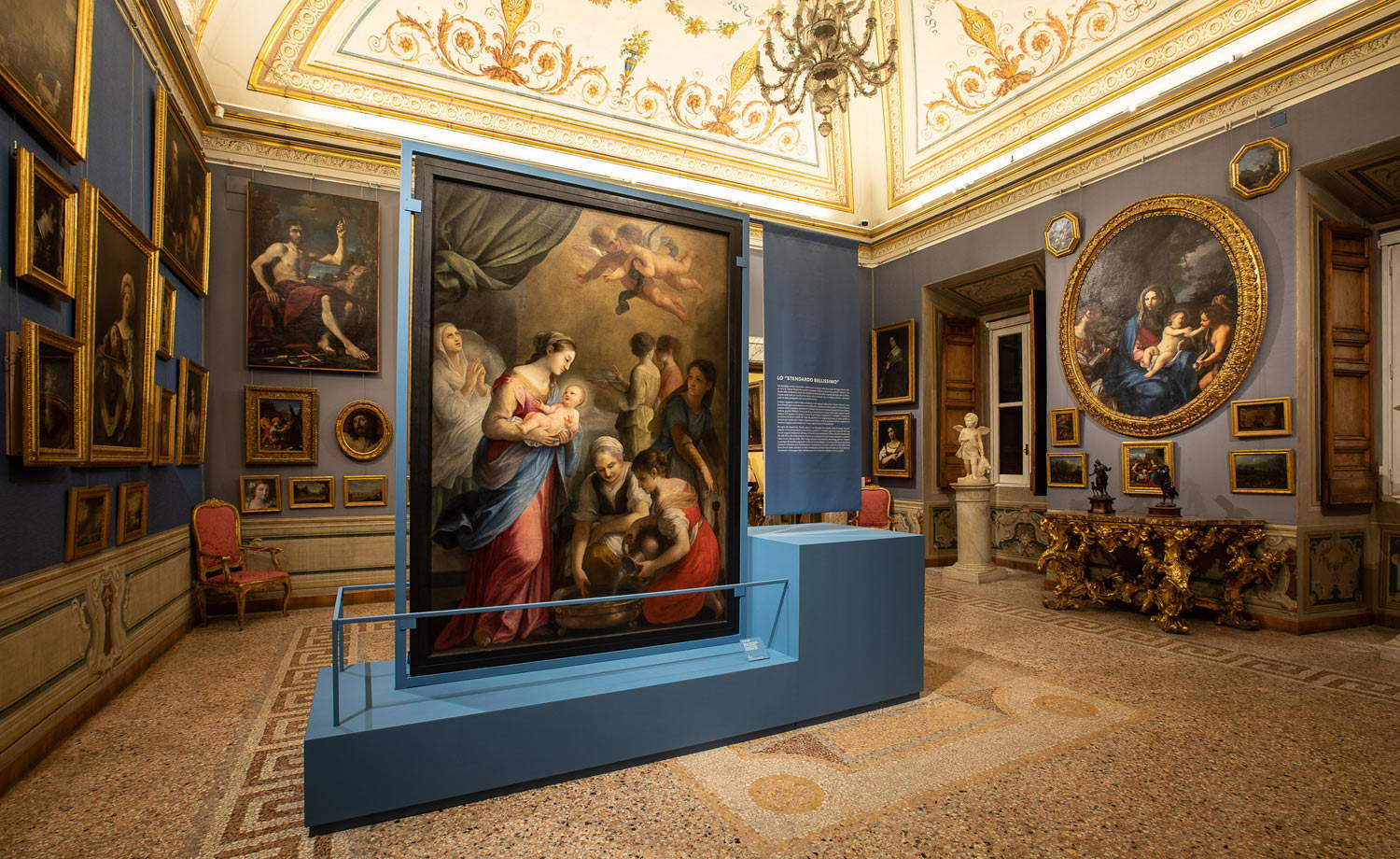

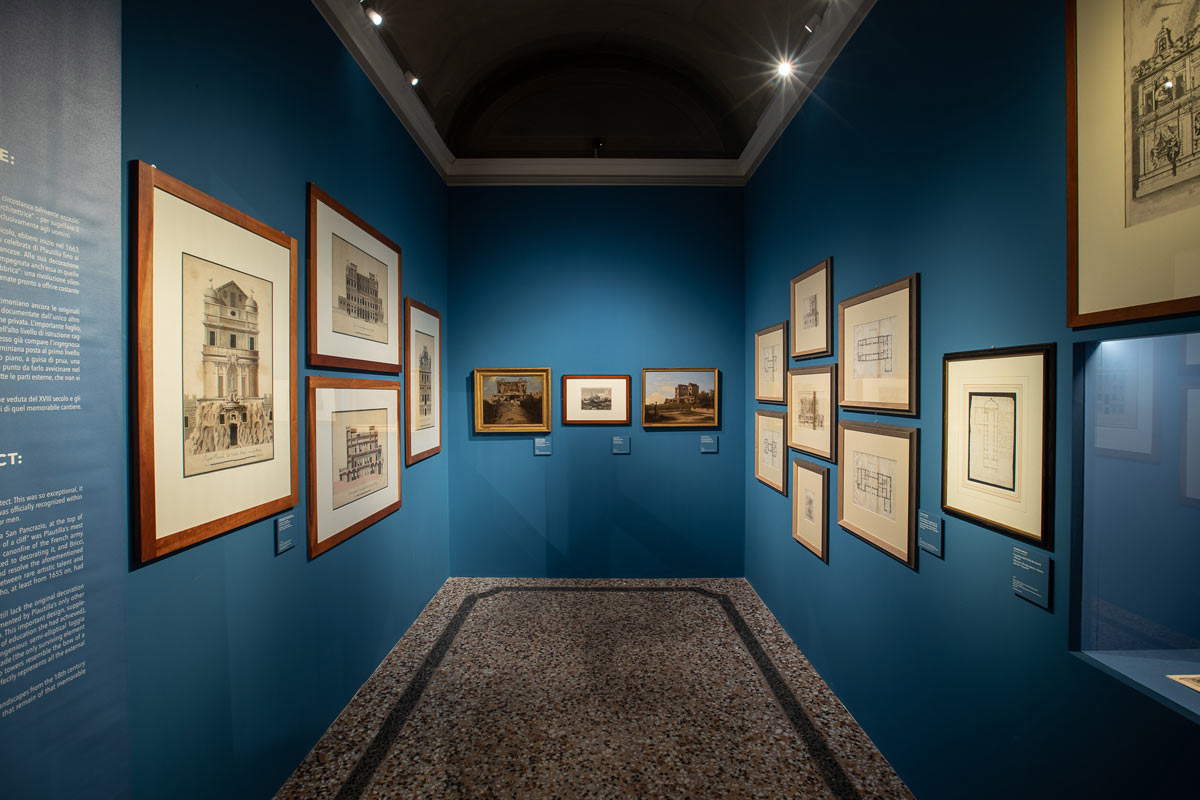
The first section, Barocco in rosa (Baroque in pink), is built entirely with three works from the Barberini Corsini Galleries to offer the visitor a quick overview of female painting in seventeenth-century Rome (unfailingly, of course, Artemisia, present with theSelf-portrait as an allegory of painting), and with a valuable novelty, that is, a portrait published in 1987 by Patrizia Giusti Maccari, in whose effigy Gianni Papi proposes for the first time (albeit with the caution suggested by the question mark) to identify the image of Plautilla Bricci, since according to the scholar the subject is too characterized to suggest that it is an allegorical figure. The facial features, including even the more naturalistic ones such as the very distant and slightly squinting eyes and the slightly curved nose, would, according to Papi, rule out “an ideal or allegorical intent; it is more reasonable to think that the sheet of paper with architectural plans held in the foreground by the protagonist’s left hand and the compass held with the right are the proud symbols of the model’s abilities, so unusual for a seventeenth-century woman.” It is a start to effect: the image of this woman, so unusual, is impressed in the eyes of the visitor, who will always keep her mentally present throughout the itinerary, also because in the layout it is placed immediately at the beginning, almost as if to take the public by surprise and guide them to the gallery, where a fundamental theme of Plautilla Bricci’s career is immediately introduced, her association with Elpidio Benedetti.
It is difficult to briefly summarize the figure of the abbot. Primarosa, in the introduction of her voluminous book resulting from the 1563 Foundation Baroque studies program, provides four cardinal points to fix his activity: agent, art connoisseur, patron and “dilettante.” Agent, specifically, of Julius Mazarin: Benedetti would always remain linked to France, however much of his life he spent in Rome, tasked with managing the cardinal’s Roman affairs. After Mazarin’s death, he went into the service of Jean-Baptiste Colbert, remaining nevertheless “for more than fifty years a key figure in the political and artistic dialogue between Rome and Paris.” A man of vast culture, he was also known, Primarosa wrote, “for being a shrewd collector and dealer in paintings and ancient statues, as well as for the relations he had [with] some of the most famous artists of the time.” Benedetti himself was practiced in drawing as well as a commissioner of works of art, so much so that he formed a lasting partnership with Plautilla. In her monograph, Lollobrigida speculated that the role of facilitator between Plautilla and Elpidio Benedetti can be attributed to the lawyer Teofilo Sartorio, a mentor of Giovanni Bricci in contact with Cardinal Mazarin. Primarosa instead calls into question Elpidio Benedetti’s sister Flavia, who became a nun at the convent of San Giuseppe a Capo le Case in 1627 under the name of Sister Elpidia: in his guide to Rome published in 1638, the erudite Pompilio Totti mentions “some paintings” in the convent by the hand of Sister Euphrasia, who therefore, according to this source, was interested in painting. The two women may have known each other in Carmelite circles (it is precisely from the Carmelite sphere that Plautilla’s first known work, dated 1640, discovered by Primarosa, and displayed in the exhibition, is from), and Euphrasia may have introduced Plautilla to Elpidio. The latter had learned his rudiments of art in the workshop of his father Andrea Benedetti, a papal embroiderer: in the exhibition, following a new hypothesis that Plautilla may have frequented theatelier of Andrea, who died in 1651, the embroiderer’s earliest known works are lined up, including the chasuble of Gregory XV on loan from the Treasure of Bologna Cathedral, to present the results of an art in which Plautilla also practiced (a commission from Cardinal Francesco Barberini in 1664 for a table cloth with St. Francis and some wall hangings painted in 1667, all lost works, are known).
With the third section we get to the heart of the relationship between Plautilla Bricci and Elpidio Benedetti, with the two designs (reproduced in facsimile) for the funeral monument of Cardinal Mazarin (a portrait of her, executed by Pietro da Cortona and kept in a private collection, scenographically marks this chapter of the itinerary). The curator attributes its conception to Benedetti and its execution, for stylistic reasons and proximity to the only known drawings, to Plautilla: in the more magniloquent one, conceived for a monument to be leaned against the wall (the other instead designed to be raised isolated), one observes the sarcophagus surmounted by the statue of the cardinal in the round, flanked by two angels blowing trumpets and surmounted in turn by the allegories of Justice and Peace, identified respectively by the bundle and the olive branch, with a putto flying above all the figures holding a crown. A project from 1657, born as a result of a special circumstance (Gian Lorenzo Bernini, asked in the first instance, declined the invitation to take charge of the undertaking), this is the work that initiated the association between Plautilla and Elpidio Benedetti: however, the project would not be realized.
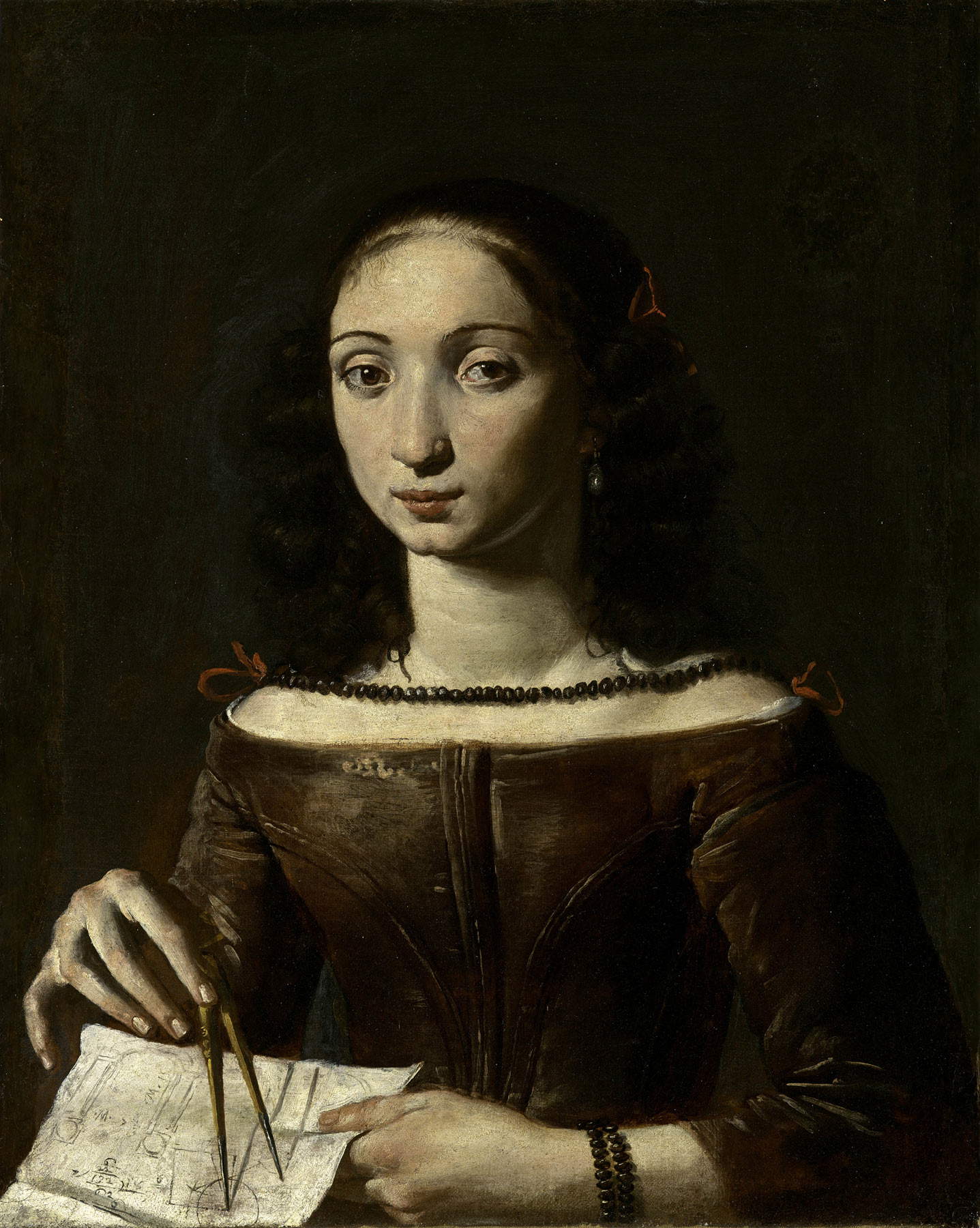
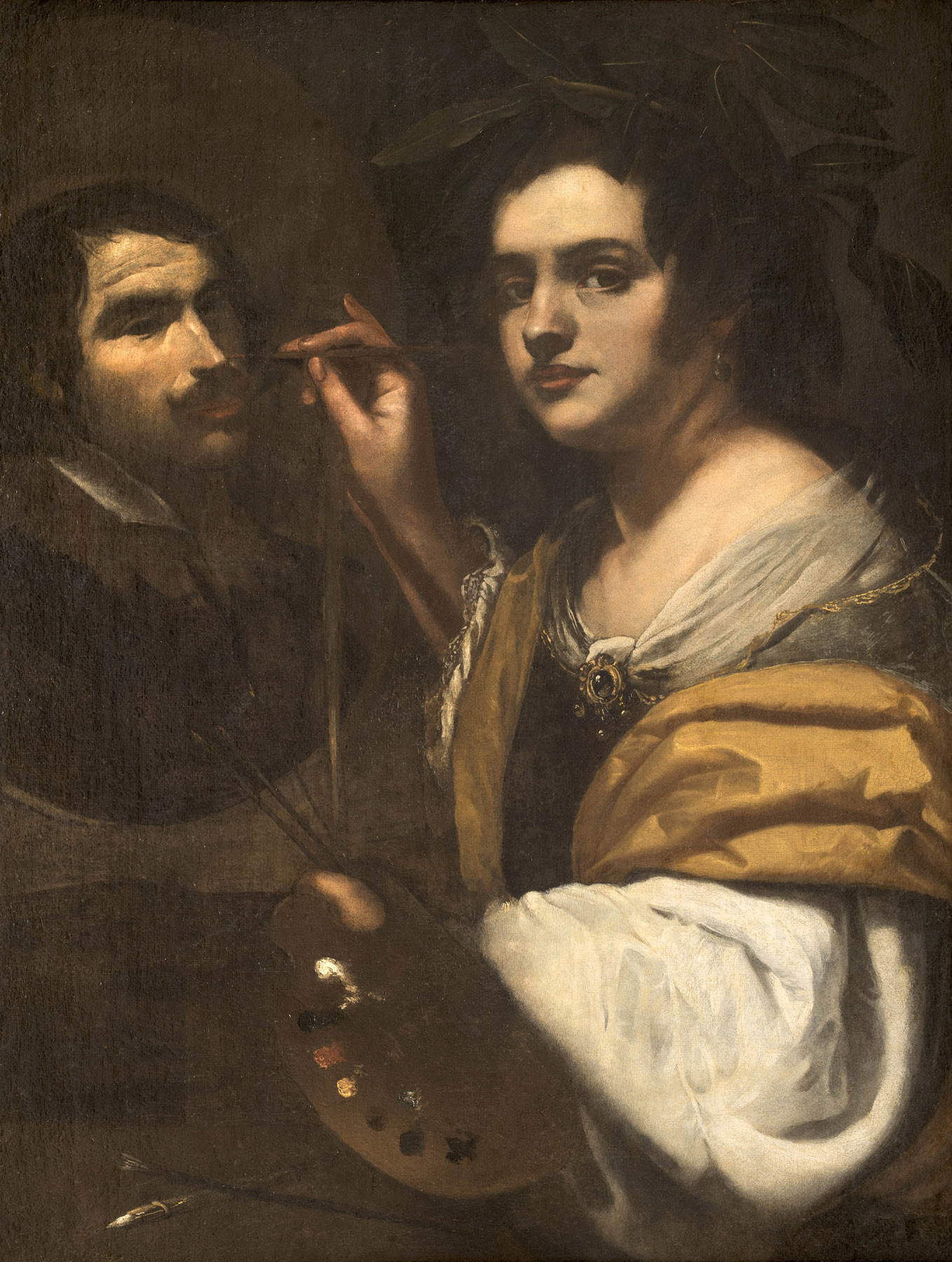
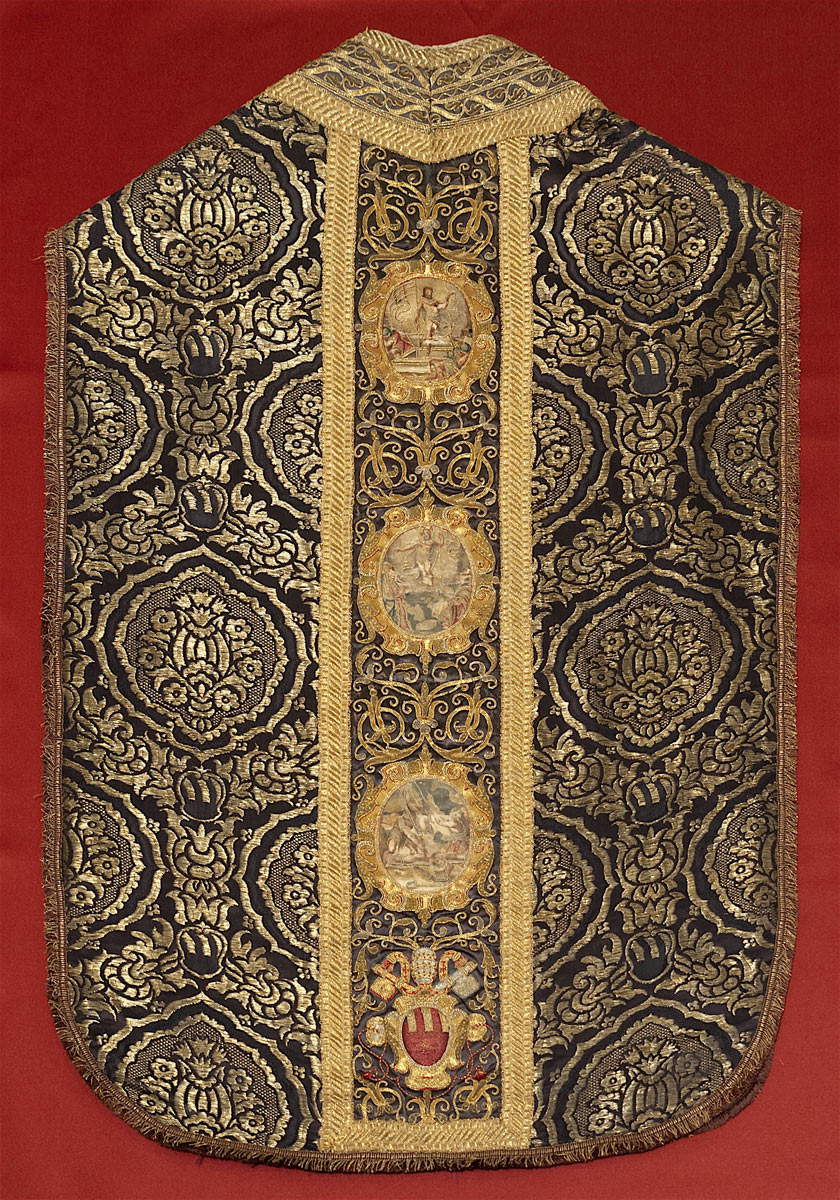
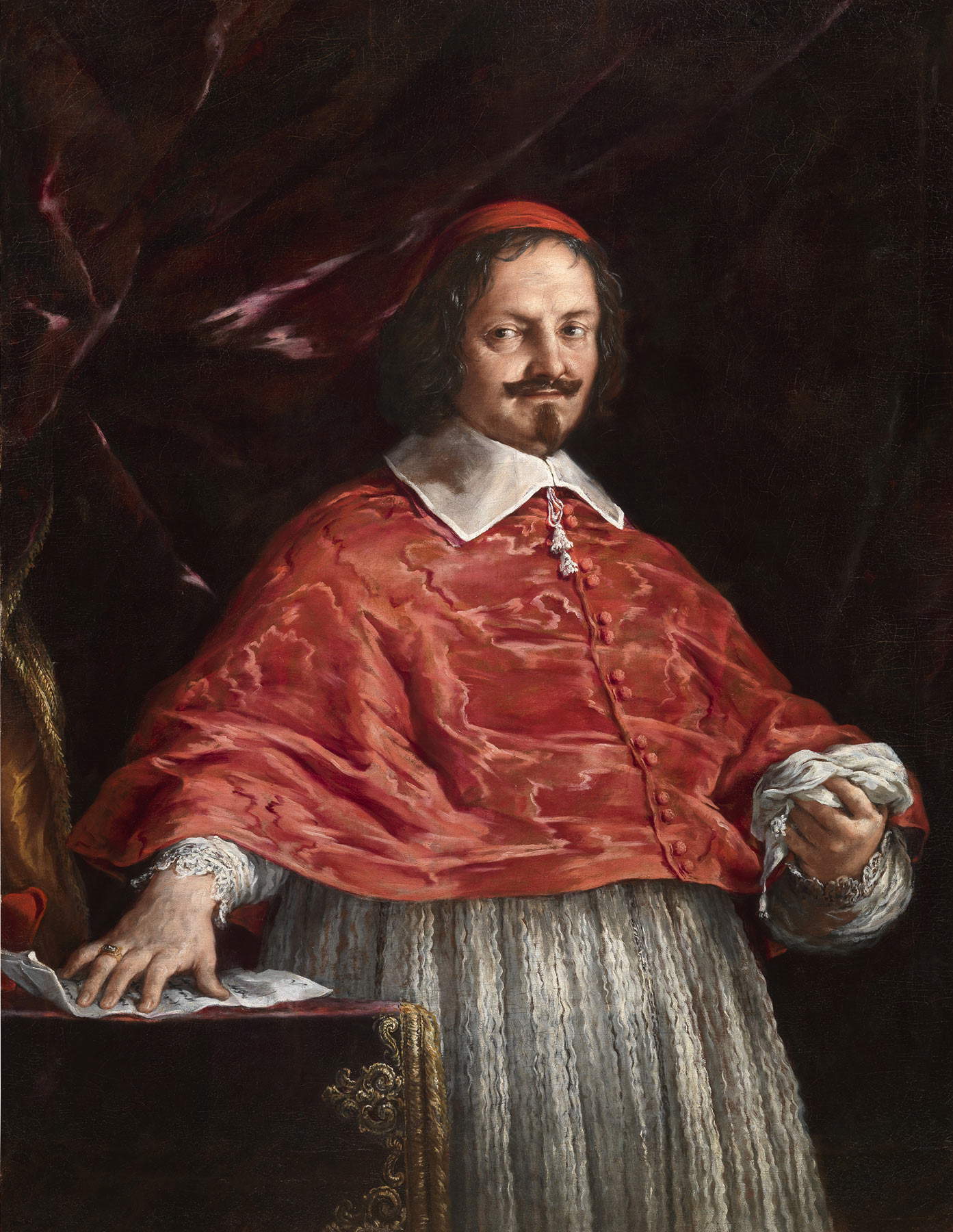
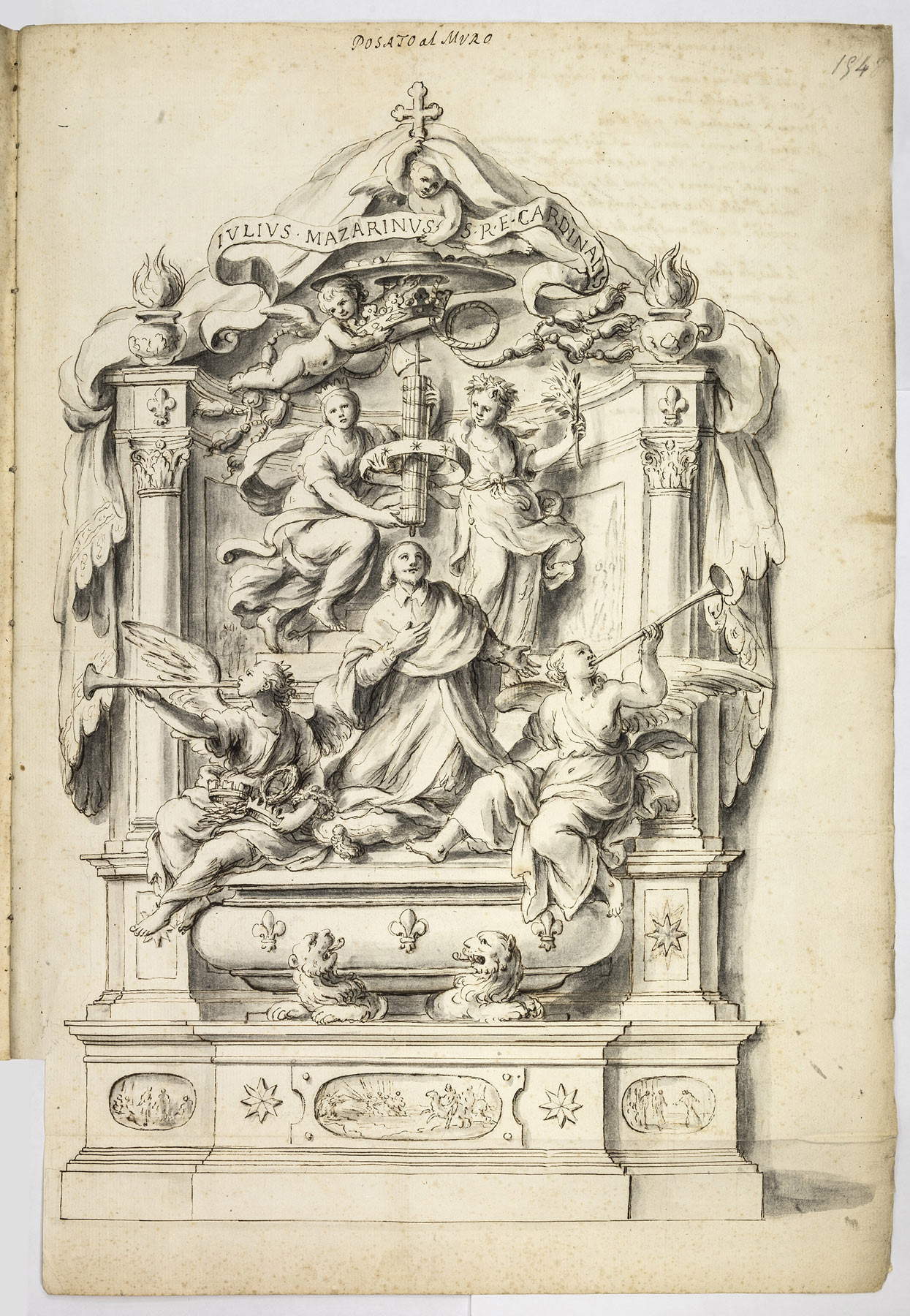
The abbot, however, was for Plautilla not only the creator of projects within the scope of which the role of mere executor was reserved for her: he also served her, we would say today, as a salesman. And the first painting by Plautilla with which one comes into contact in the exhibition, one of the few in the Roman artist’s very limited pictorial corpus, the processional banner painted in 1675 for the Compagnia della Misericordia of Poggio Mirteto (“beautiful” it was called by the enthusiastic brethren), arose from a commission that was procured for her precisely through Benedetti. The painting, added to Plautilla’s catalog in 2012 by Yuri Primarosa, can now be admired on the high altar of the church of St. John the Baptist in the Sabine city (it was reused as an altarpiece from the 1700s), and is painted on one side with the Birth and on the other with the Death of the Baptist. This is the only work by Plautilla of which we have a certain date, although it is a very advanced work: at the time of its creation the artist was in fact already fifty-nine years old. A classical, composed work, gracefully cortonesque and with more pronounced naturalistic accents in the scene with the Death of the Baptist, it is judged “a true masterpiece of the painter” by Primarosa as well as indebted to the calm language of Giovanni Domenico Romanelli and Andrea Sacchi, with even which Arpinesque echoes (Lollobrigida compared the Birth scene with Cavalier d’Arpino’s Birth of the Virgin in the church of Santa Maria di Loreto, believing the former to be almost exemplary of Giuseppe Cesari’s work).
Plautilla’s painting activity has been collected in a single room opened chronologically by the Madonna and Child, a work attested by the sources (also because in ancient times it was considered miraculous), thought to be lost until recently and discovered in 2018 by Primarosa (in the place where it had been installed in 1676, namely the altar of the church of Santa Maria in Montesanto in Rome), who reconstructed its history. It is the first public work executed by Plautilla in Rome, in honor of the Blessed Virgin of Mount Carmel rendered on canvas according to the most traditional iconography, and with the compassed and almost naïve manner of an artist at the beginning of her career (although showing, Primarosa points out, “some quality in the cheerful and present face of the Child Jesus and in the perspective rendering of the Virgin’s hand holding the globe). The attribution is confirmed by the presence of the artist’s signature on the back of the canvas, close to a note that says the work ”depinta circa l’anno 1640 da Plautilla Bricci romana zitella." Bizarre and worthy of mention are the circumstances under which Plautilla’s miraculous icon came into being, since her father Giovanni (who was also an actor) made people believe that the work had been completed by Our Lady: a work therefore believed to be acheropite, which granted Plautilla the fame of a woman touched by divine grace, a status that, in the face of her vow of chastity, spared her an arranged marriage and entry into the convent, thus placing her, in some way, at the origin of her independence. Being therefore dated to about 1640, it would be Plautilla’s first known work and, according to Primarosa, also the first work referable to her, the curator having discarded the attribution to Plautilla of the Holy Family and the Eternal in the church of Saints Ambrose and Charles al Corso, an oratory where Giovanni Bricci, although long before the birth of his daughter, held the position of choirmaster. Other works by Plautilla alternate in the same room, beginning with a masterpiece such as the lunette with theAngel Offering the Sacred Heart of Jesus to the Eternal Father from 1669-1674: a work made known by Consuelo Lollobrigida, who indicated its provenance from the sacristy of the Lateran canons in St. John Lateran, executed in tempera on canvas, it is a striking, monumental, modern painting that, like the banner of Poggio Mirteto, looks to Pietro da Cortona and Giovanni Francesco Romanelli (who is also present in the exhibition with four paintings). It stands out for one detail: Plautilla proudly signed the work with the formula “invenit et pinxit,” thus claiming not only the execution, but also the invention of the work, and thus attributing to herself a role that publicly she was seldom acknowledged. The “tour” of Plautilla’s works is completed with the delicate Madonna del Rosario from the collegiate church of Santa Maria Assunta in Poggio Mirteto, attributed by Primarosa to Plautilla in 2014 on a stylistic basis, an elegant ribbed canvas in dialogue with Romanelli’s counterpart painting from the church of Santi Domenico e Sisto in Rome, and with the solemn St. Louis IX of France between History and Faith, which initiates the audience toward the conclusion of the exhibition.
The canvas was in fact painted for the Benedetti chapel in San Luigi dei Francesi, designed by Plautilla for the abbot in the 1970s: “a manifesto of the renewed protection accorded by France to Catholic instances,” wrote Primarosa, the chapel is a work of Bernini taste, introduced by a large baroque drape inserted like a curtain that opens before the eyes of the faithful. The architect gave proof here of that theatricality and taste for the eccentric that she had already demonstrated in her masterpiece, the “Villa Benedetta,” also known as the “Villa del Vascello” for its singular shape, whose events are retraced in the last part of the exhibition: built between 1662 and 1665, it was the residence of Elpidio Benedetti. At the Corsini Gallery here are the plans and drawings, displayed after a restoration, as well as images executed by other artists and architects who wanted to fix Plautilla’s ideas. They are living witnesses to the architect’s highly original solutions: a semicircular loggia that acted as the “prow” of the vessel, the towers that soared like sails, the very special cliff-shaped entrance (one of the few surviving elements). The folly of war deprived us of the architect Plautilla’s most spectacular achievement: the Villa del Vascello was tragically destroyed in 1849, during the defense of the Roman Republic, devastated by French artillery, since it was located near the Walls of Rome and found itself malgré soi to act as a last bastion for the defenders. It was partly demolished, although the remains, later rearranged, are still in use and are now the headquarters of the Grand Orient of Italy.
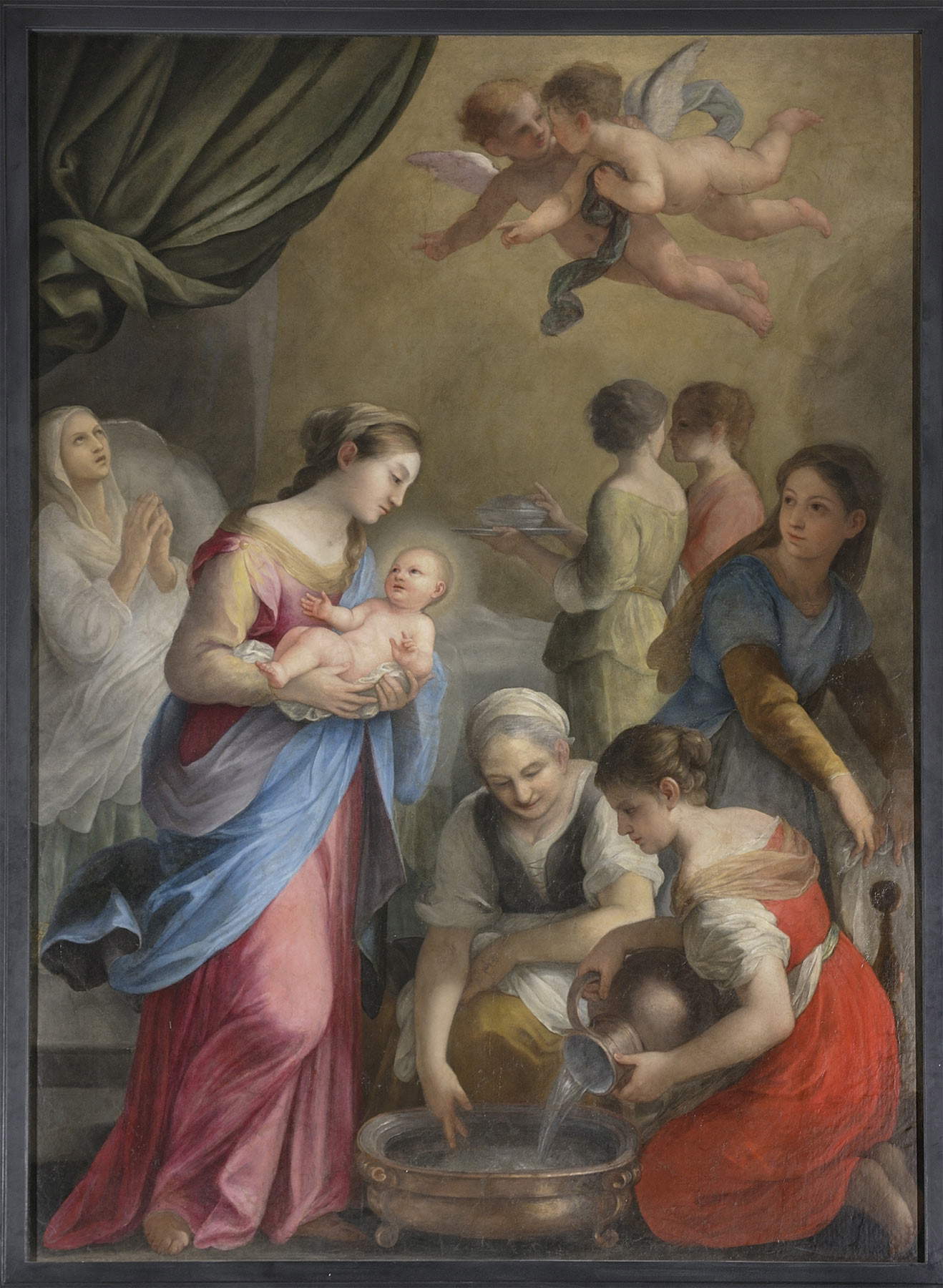

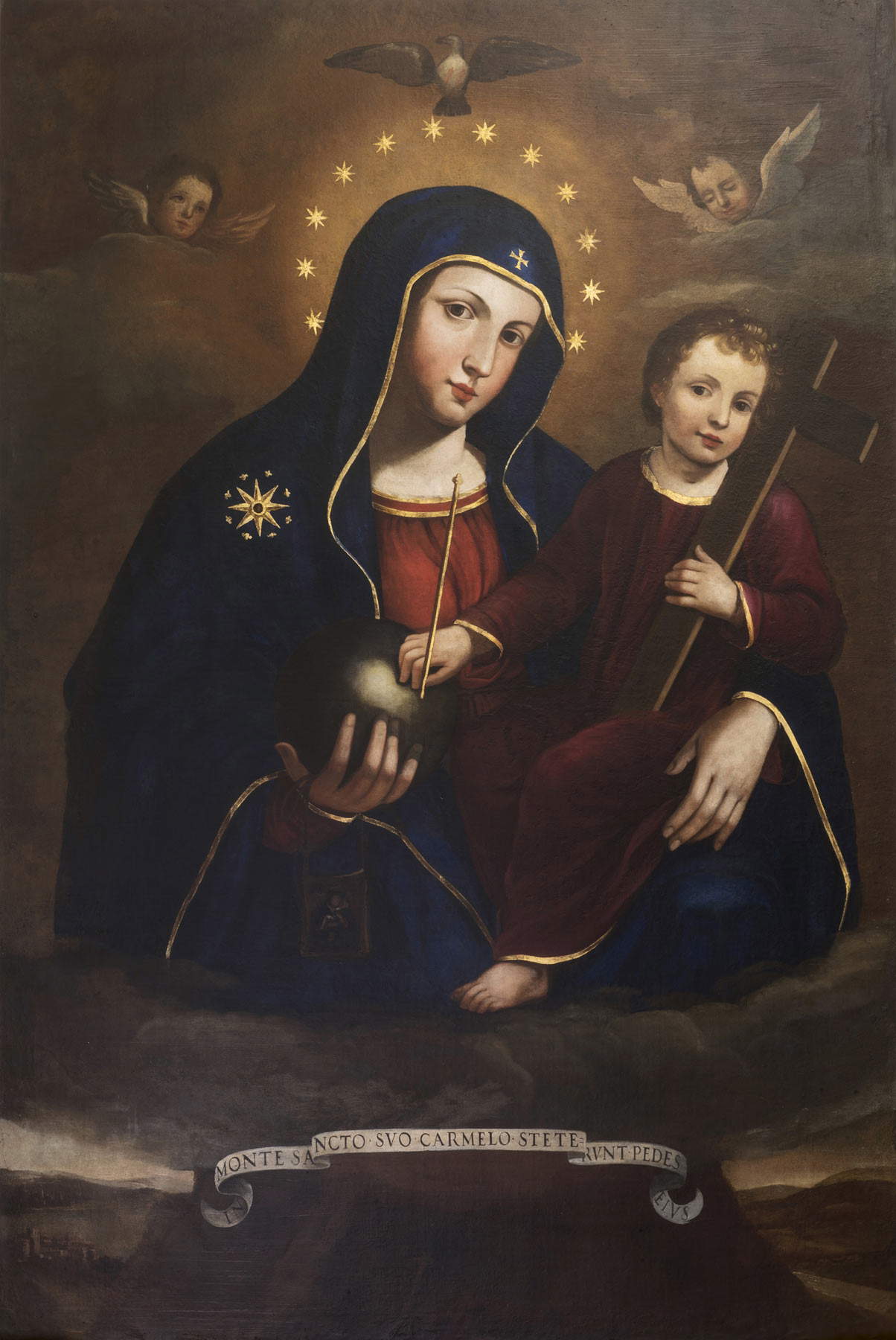
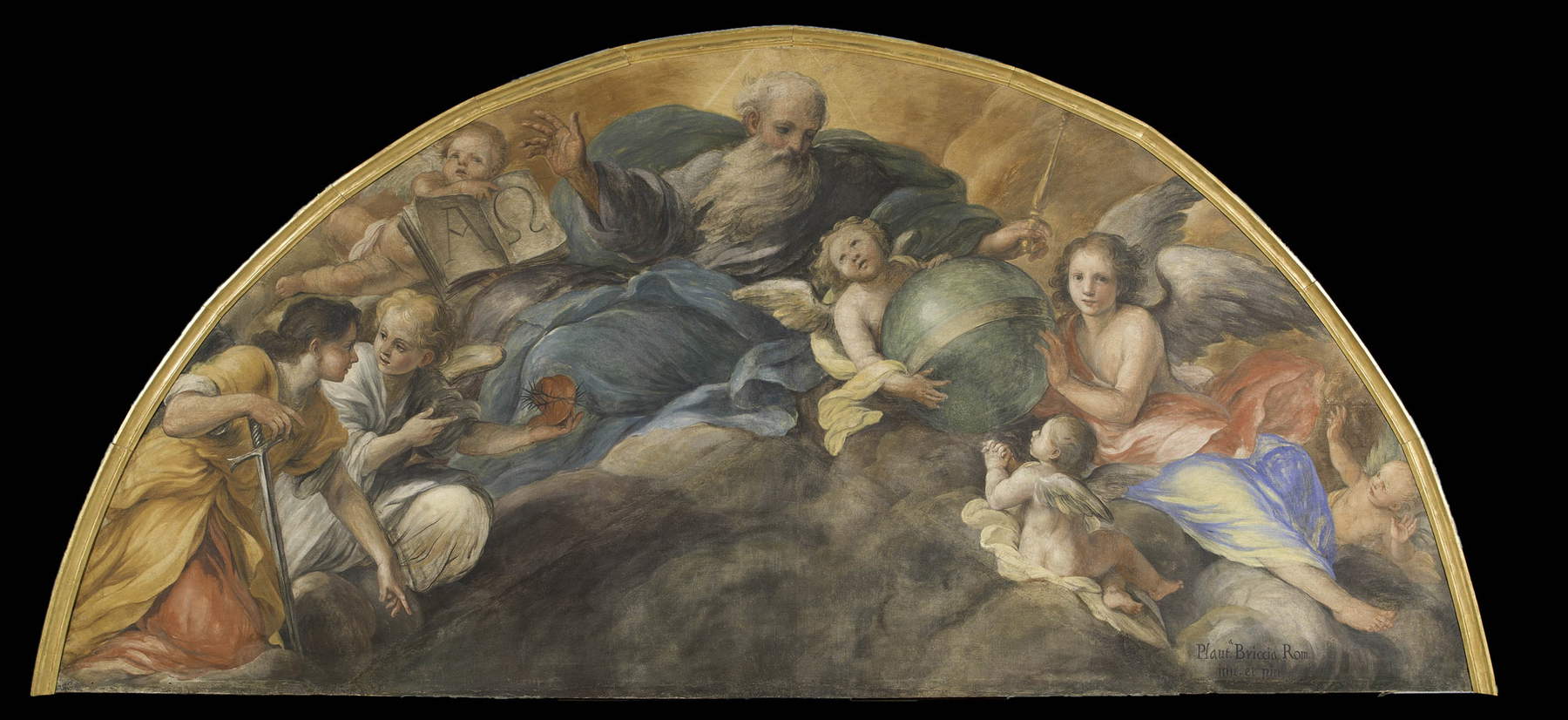
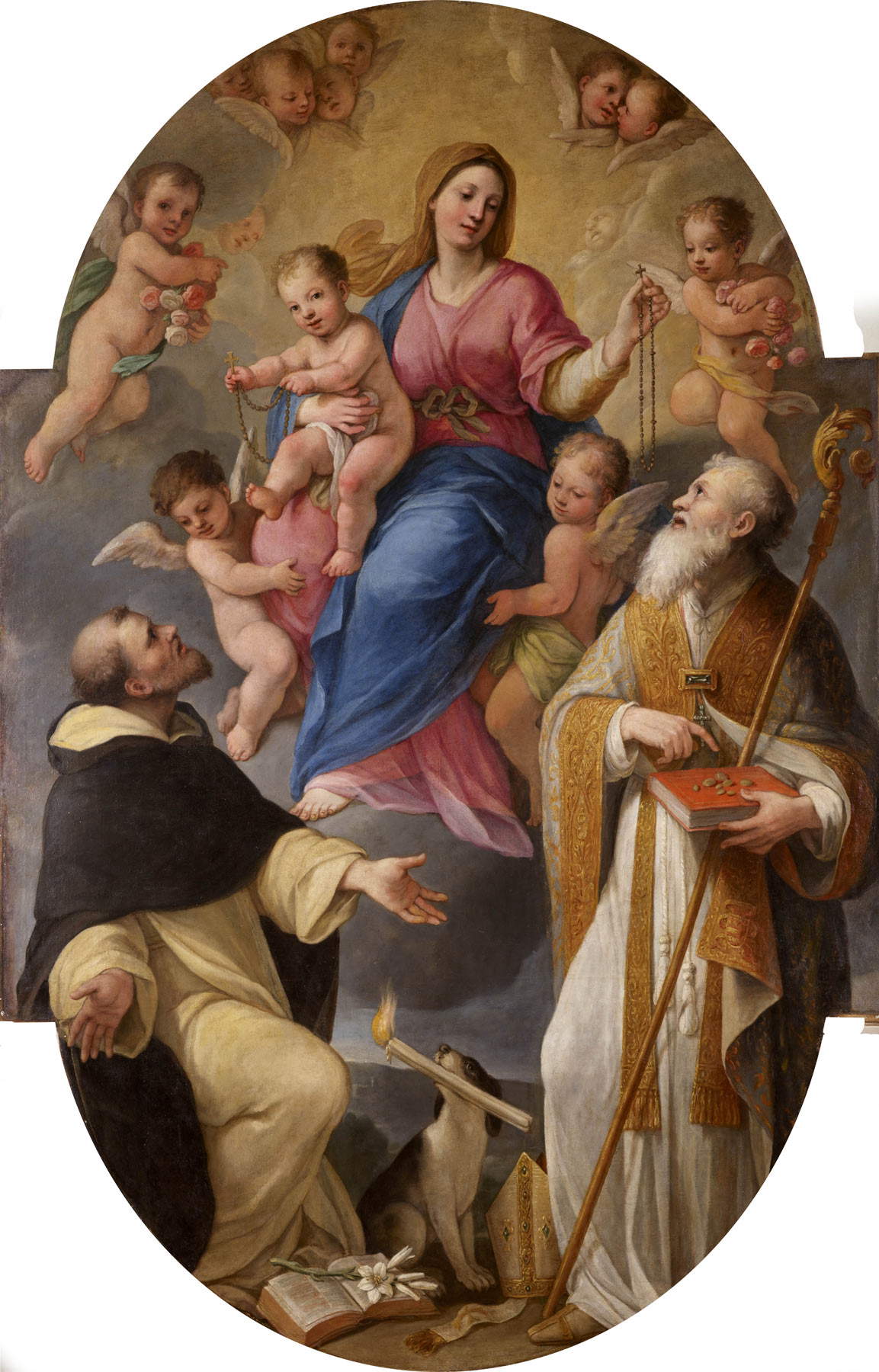
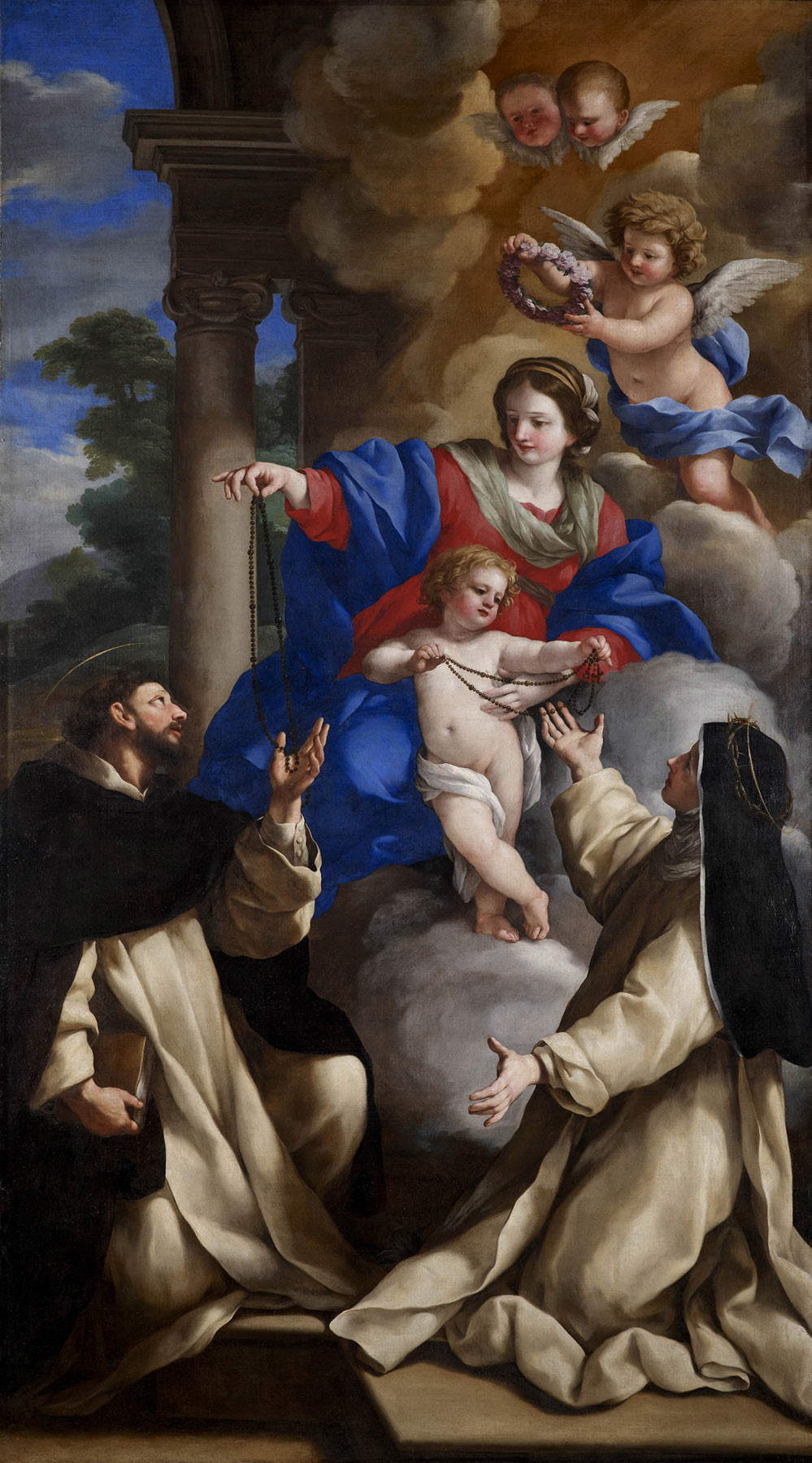
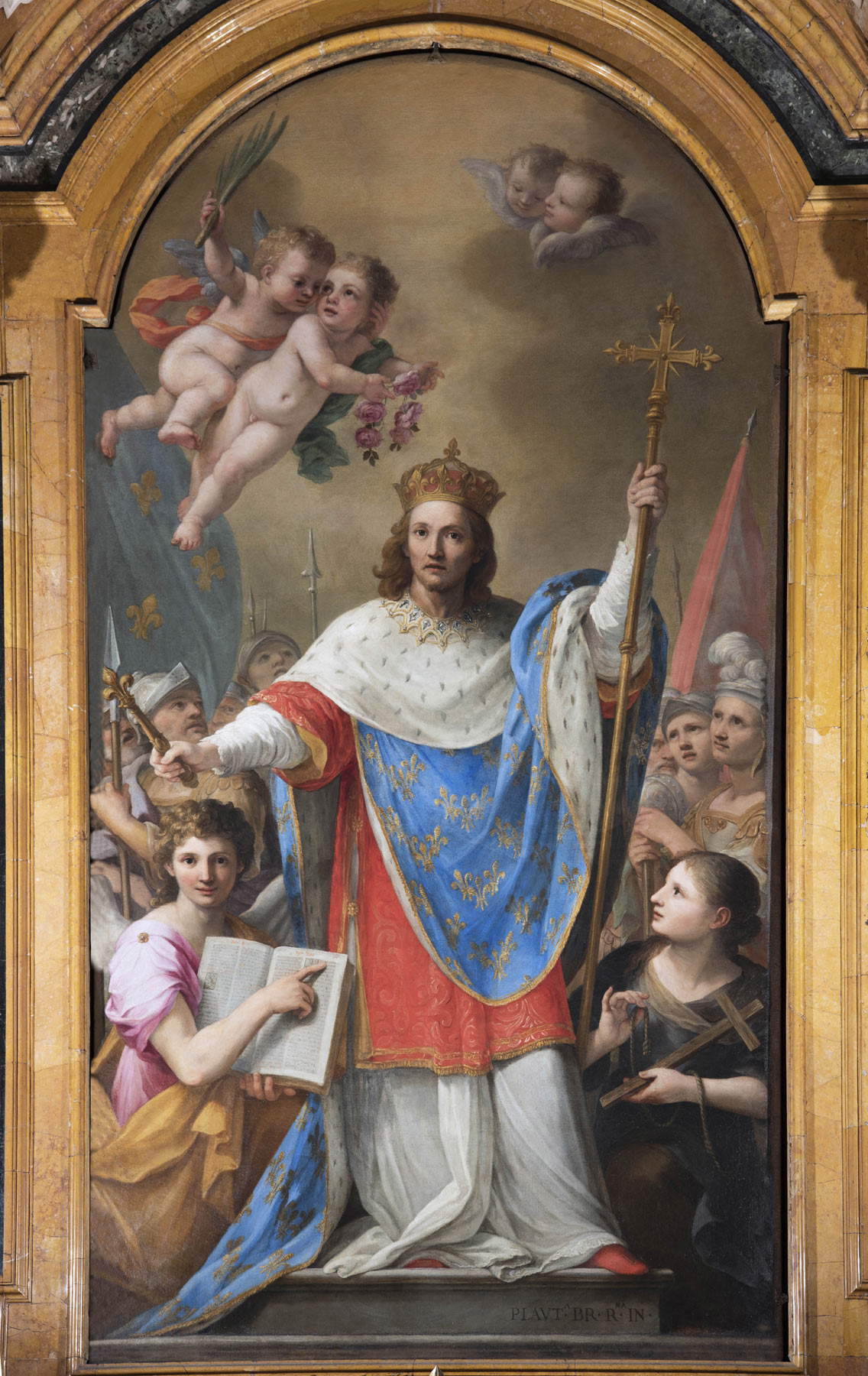


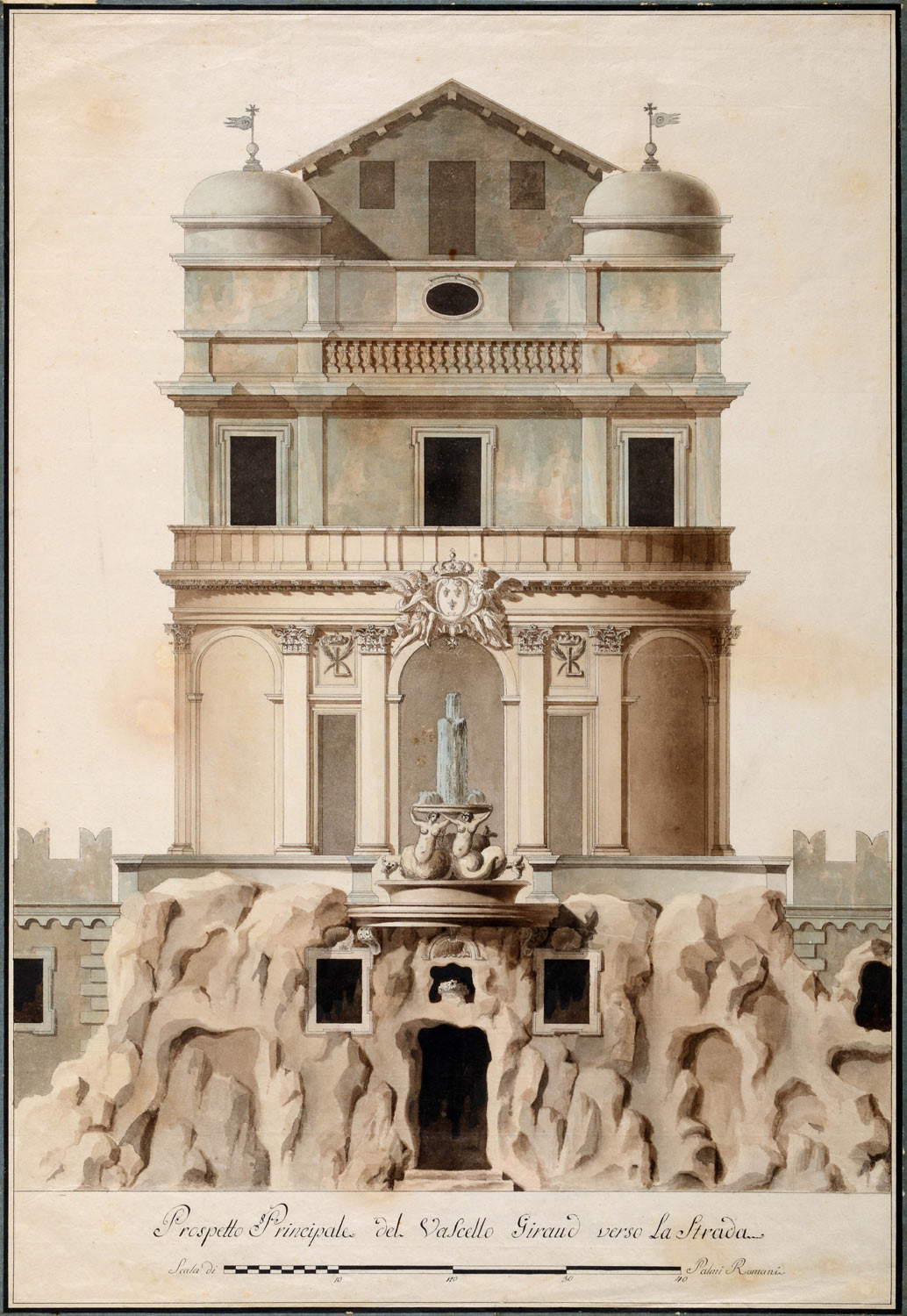

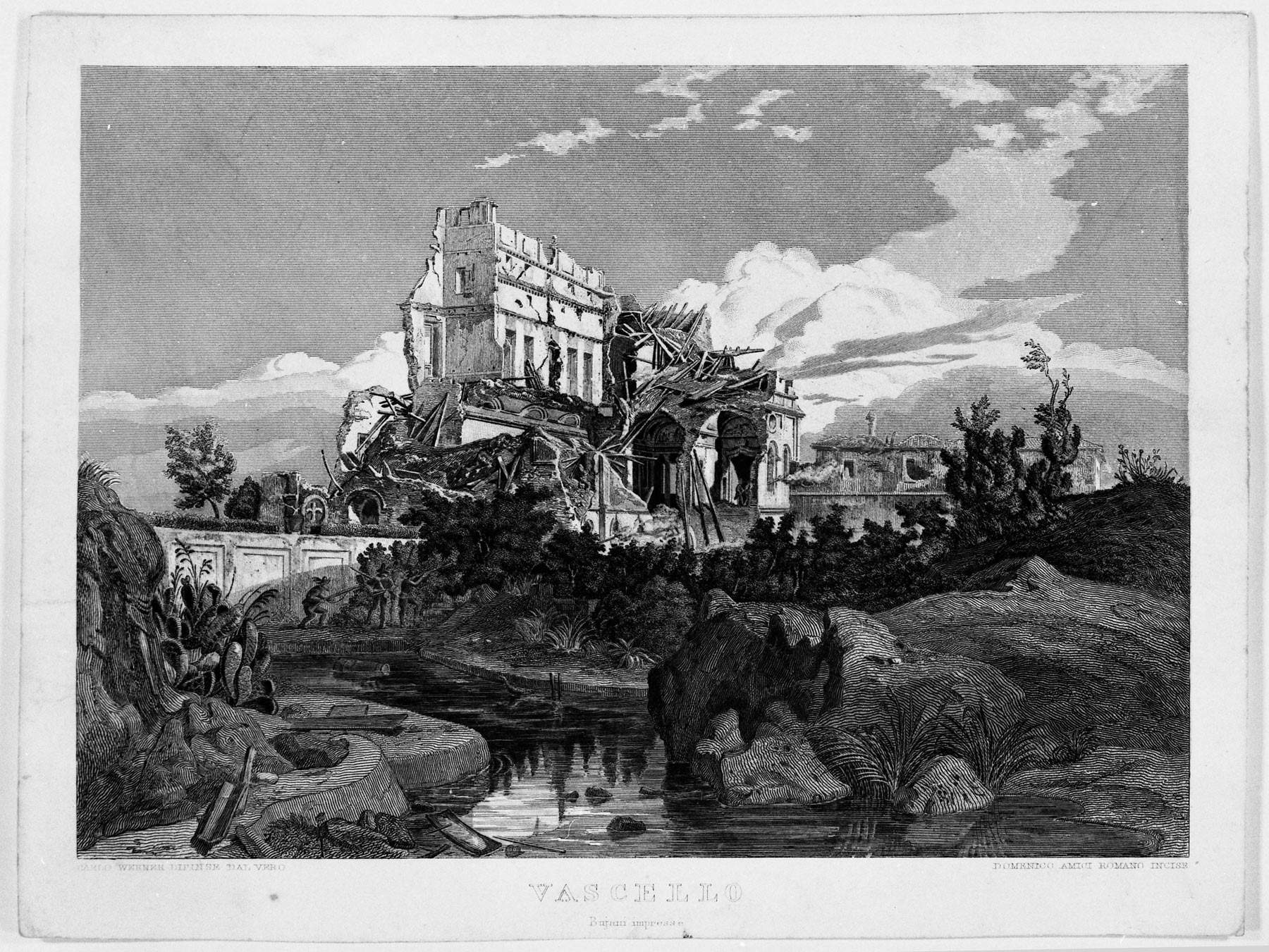
The knots remain as to how Plautilla Bricci gained access to the profession of architect, which at the time was exclusively male: in Italy there are no similar precedents, while outside the peninsula the only case that could be discussed is that of the French noblewoman Katherine Briçonnet, who had some role in the design of the castle of Chenonceau, in which she lived with her husband Thomas Bohier, treasurer of the French crown in the early sixteenth century. However, this is a subject that has been little studied, and Plautilla’s case has such characteristics that, to the best of our knowledge, we could call her the first woman in history to practice the profession. Elpidio Benedetti, her powerful collaborator, was a habitué of the workshops of the great architects of the time, from Gian Lorenzo Bernini to Francesco Borromini, from Pietro da Cortona to Carlo Rainaldi: he was certainly instrumental in the start of Plautilla’s career, so much so that the artist was probably involved in the renovation of a house that Benedetti had rented in 1651, but her training certainly took place in another context, and from the itinerary of her visit we do not glean any answers on the question, which is, moreover, very fascinating. Lollobrigida, in his monograph, proceeds by conjecture, all of which cannot be proved at the moment by documents, and hypothesizes that Plautilla attended the (in turn hypothetical) training school for architects perhaps opened by Cassiano dal Pozzo in his palace, and that she practiced together with her brother Basilio, who also later became an architect, in the building site of Santi Ambrogio e Carlo al Corso, whose construction began in 1612 and went on very slowly. However, these are only hints: as yet we have no information about her training as an architect.
We can certainly imagine that the fact of being a woman did not help her, indeed it was an obstacle. Benedetti, in his correspondence exchanges with Mazarin, while mentioning several architects, never mentions Plautilla. Evidently, Primarosa explains, on the one hand the abbot intended to “arrogate to himself the merit, intellectual and material,” of the works created for the cardinal, and on the other he believed that revealing the presence of a woman behind the projects presented to Mazarin “would further reduce their already slim chances of success.” It was not until later, at the time of the Vascello and San Luigi dei Francesi construction sites, that Plautilla finally had the opportunity to emerge as an autonomous artist. In a word, to emancipate herself. And this would happen only after Mazzarino’s demise, when perhaps Benedetti felt it was time to uncover some of her papers, albeit prudently (Plautilla’s possible contribution to the designs for the Spanish Steps of Trinità de’ Monti, a work that never found concretization, was in any case hushed up, just as the Vascello was passed off as Basilio’s creation): it is no coincidence that the most important part of Plautilla’s career, including the most prestigious commissions, dates from the 1960s onward. So, Plautilla Bricci painter and architect. A Silent Revolution, is exhibition that not only fully restores to us the physiognomy of the artist based on what we know of her, but also lays the groundwork for further developments. In the meantime, the public can take advantage of a useful and so far unique opportunity to get to know up close, with almost all that we know of her, the history, the human story and the art of a painter, an architect, a woman who took a lifetime to emerge.
Warning: the translation into English of the original Italian article was created using automatic tools. We undertake to review all articles, but we do not guarantee the total absence of inaccuracies in the translation due to the program. You can find the original by clicking on the ITA button. If you find any mistake,please contact us.